What Dragons: Race to the Edge Gets Right (and Wrong) About Its “Native” Women
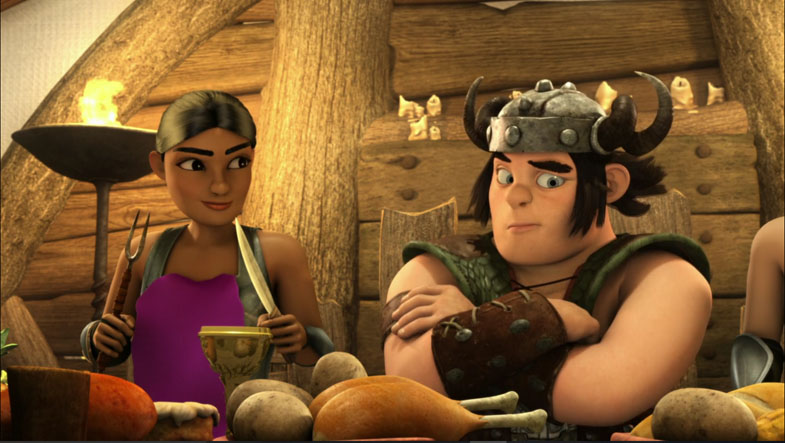
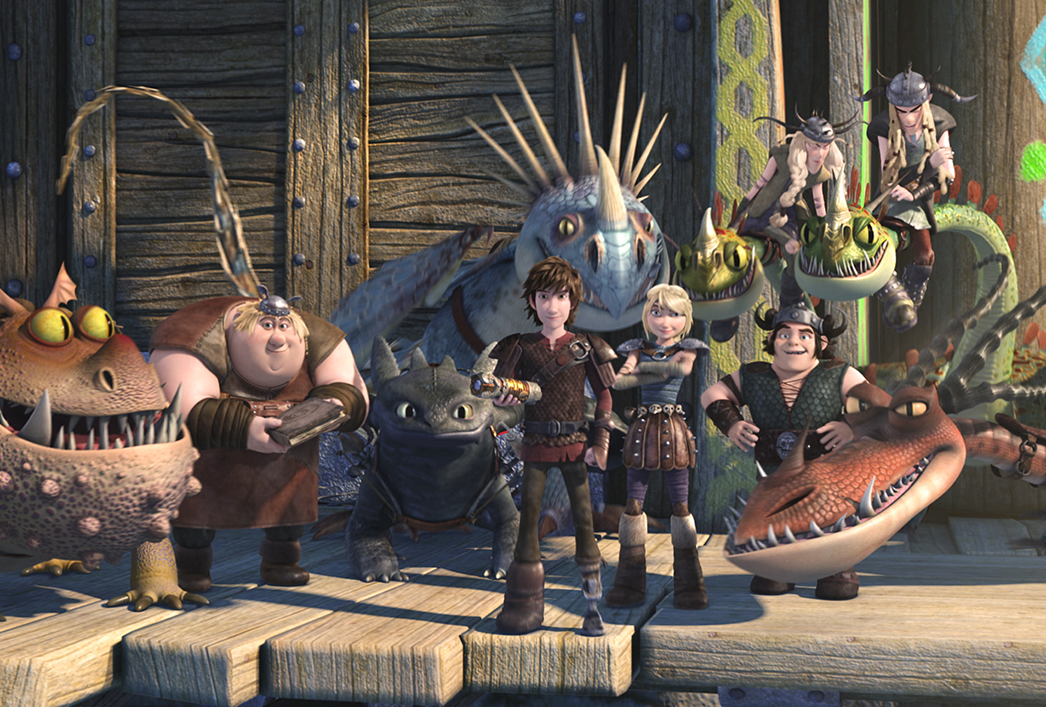
I need to start off by saying that the Dreamworks Dragons: Race to the Edge series is good. It’s really good, better than any movie spinoff aimed at kids has any right to be. It bridges into the initial two seasons of Dragons: Riders of Berk that first aired back in 2012, connecting things narrative-wise, but also totally blowing them out of the water in terms of plot, character, and visuals especially.
Not only that, but fans of the show are treated to not one but two ass-kicking female leads, who are members of the core Dragon Rider gang. There’s leading lady Astrid Hofferson, who drops villains with a single punch, does sick aerial dragon-back gymnastics, designs and builds a complex and deadly defense system for the Dragon Riders’ base, and single-handedly learns to train an especially dangerous dragon while temporarily blinded.
There’s also Ruffnut Thorston, who, while often functioning as one half of a comedic duo with twin brother Tuffnut, is also instrumental in saving the day in unexpected and generally wacky ways—and now and then she gets a chance to show she’s just as tough in the face of danger as any of the other Vikings.
We also get Heather, a bit-part character in Riders of Berk whose role is dramatically expanded (in both terrifying axe-wielding and emotional growth capacities), and Mala, the no-nonsense warrior queen of a Viking tribe that protects endangered dragons. We even get Berk elder and healer Gothi, who starts as a well of ancient knowledge and grows into an unexpected dragon-riding badass herself.
I could go on, but suffice to say that this is a good show for girls. It’s plagued by the same issue as so many others in pseudo-European fantasy settings, though: an inexplicable lack of people of color. Despite being set in a fictionalized Scandinavian Scottish archipelago, with all manner of pseudo-Viking tribes—not to mention all the, uh, dragons—they haven’t offered up a single non-white character yet. My expectations on that front were never high, I admit, so I put most of my focus into cheering the well-rounded female characters.
That’s why when this clip for the latest season came out, I was beyond psyched:
Were we finally getting an episode where all the girls hang out together on an all-women island? Incredible! Dragon Riders now landing in Bechdel Test City!
But when the episode finally dropped, my heart sank. When Snotlout awakes on the island, surrounded by the Wingmaidens, he thinks he’s being pranked by his friends, and says, “Very funny, guys. Take off that beautiful native woman costume, Fishlegs.”
He is, indeed, surrounded by beautiful women, some of whom are the standard Archipelago White, and some of whom are brown, which would’ve been extremely exciting if not for that one word: “Native.” The word is repeated by the other Dragon Riders too—mysterious “native” women, flying “native” women. “Native” women.
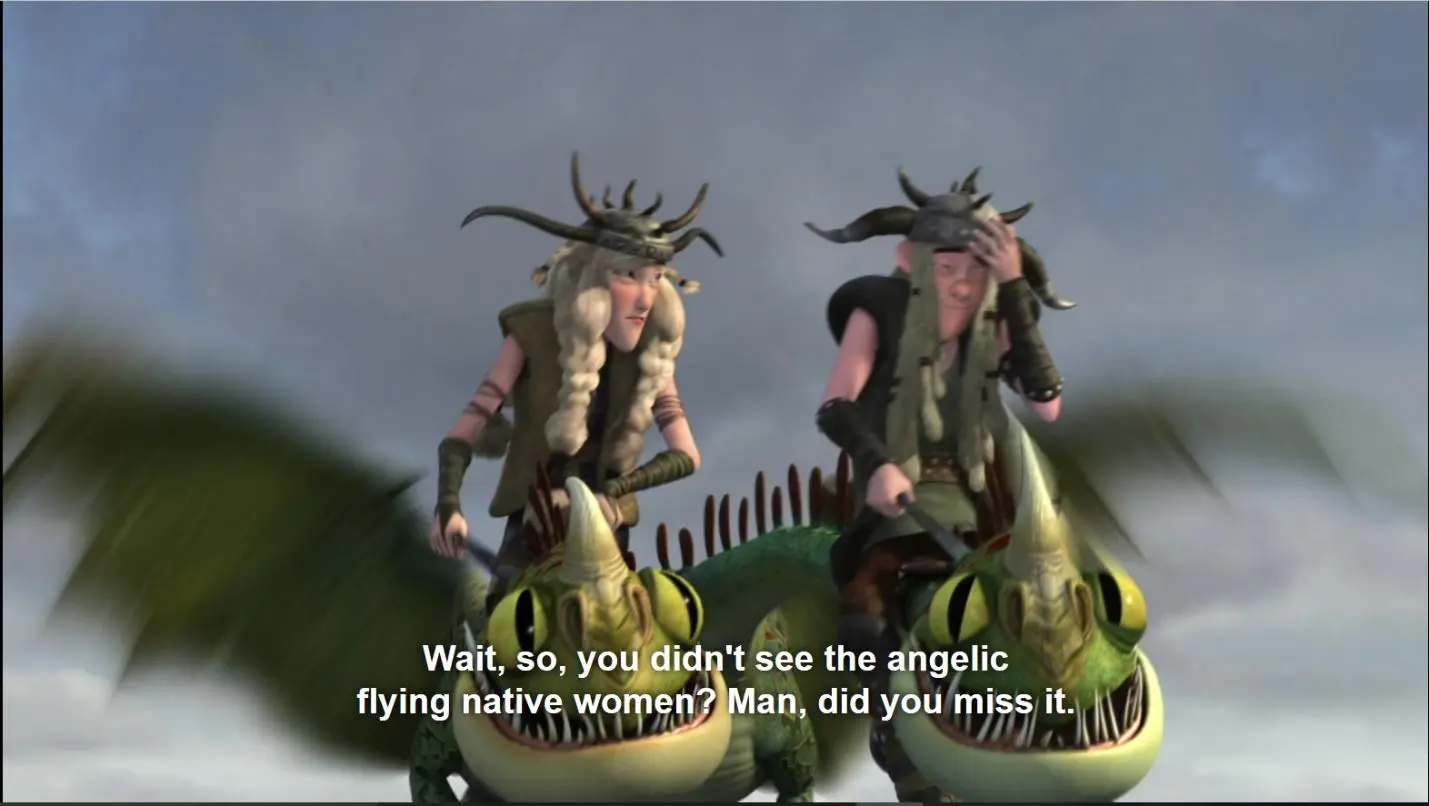
I, a member of Beausoleil First Nation, a card-carrying Ojibway “native woman,” watched in horror as my favorite show ambled casually into the Cannibal Tribe trope. The all-women tribe, one of several totally new and fictional pseudo-Viking tribes our heroes have encountered in their travels—and the only one to feature anybody who wasn’t white—was specifically singled out as “native,” and then implied to be cannibals.
Just to hammer home why this alarmed me, let me explain: Hiccup and the Dragon Riders have encountered new tribe after new tribe in their adventures. They themselves are part of the Hooligan tribe. They also either rub shoulders or clash swords with the Outcasts, Berserkers, Dragon Hunters, Defenders of the Wing, and the Tribe of the Whispering Trees, all of whom have their own respective cultures, but still fall under the same vague Norse pantheon as our friends from Berk.
When the gang meets the Defenders of the Wing for the first time, they’re a completely unfamiliar culture—they’ve got stun darts from blow-guns, leather ninja-reminiscent armour and an unexpected reverence for dragons—but nobody at any point calls them “natives.”
There’s no real reason for the Wingmaidens, then, to have gotten singled out, except to fulfill the expectations of this very old, very racist trope with a very particular vision of what a “native” is. I really don’t think the writers meant any harm, but I am saddened that nobody in the room put their foot down and said, “Hey, since we’re making a fantasy universe where we can do whatever we want, let’s not duplicate a racist category for this identifiable cultural group!”
Nobody put their foot down at this, either:

TVTropes identifies this as the Tribal Carry, a cinematic staple of classic cannibal movies where our unsuspecting hero is strung up like game on a pole by angry “natives.” Some other iconic appearances include the original Peter Pan film, when the Lost Boys are captured by, ah, the “Indians,” and more recently, Pirates of the Carribean.
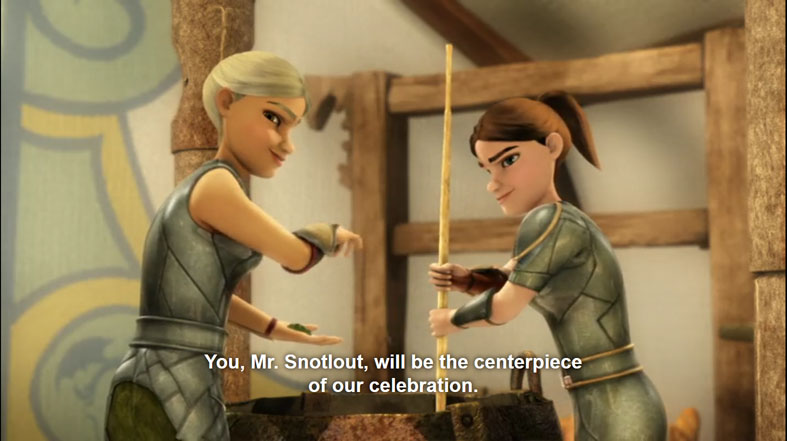
A cursory Google image search of the phrase “cartoon cannibal stereotype” should give you a pretty clear vision of what’s so icky about this trope. The idea of the uncivilized, dangerous, hostile, and hungry dark-skinned tribe goes back a long, long way, and this definitely wasn’t a great place for the Dragons showrunners to introduce brown characters for the very first time.

To their credit, the writers do subvert the trope in the end. We find out that the Wingmaidens definitely don’t eat people at all, and in fact they were just messing with Snotlout to teach him a lesson about sexism. They riffed on his assumptions about their tribe by scaring the crap out of him, which I can get behind.
They also turn out to have a deep and ancient relationship with a particular breed of dragon, the Razorwhip, that the Dragon Riders know very little about, and it seems likely that the Wingmaidens might return in the sixth and final season of the show. Ultimately, they’re a very interesting group of characters, and the episode as a whole does a lot for the show’s worldbuilding and characters—but I could’ve gone fully without the part where the Dragon Riders inexplicably treat this tribe as totally separate from every other tribe they’ve stumbled across, tossing them into the Angry Natives box for no real reason.
It’s not as though Dragons can’t tell good stories about indigeneity, either, which is why this blunder stung so much for me. While they certainly didn’t slap the word “native” on it, season four’s episode “Gold Rush” featured Heather, an orphan adoptee separated from her birth family as a child, tentatively reconnecting with her roots.
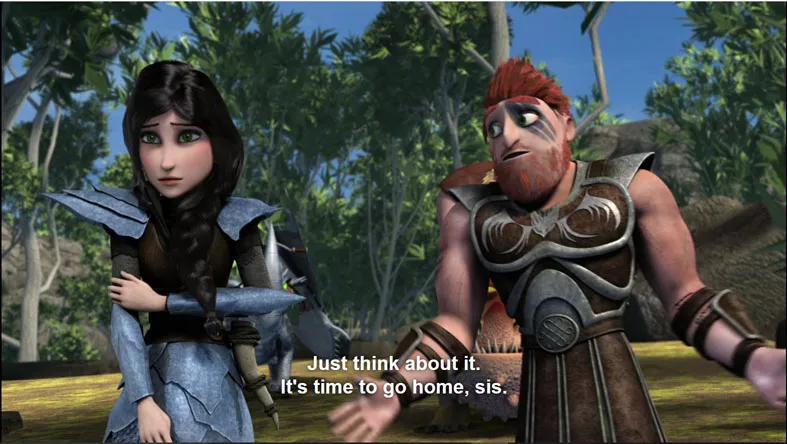
She was raised away from the Berserker tribe, had to become fiercely independent to survive, and is now completely alienated from the practices she should have been brought up with. Not only that, but she’s caught between two worlds—the one that’s her ancestral home and birthright that she’s never so much as visited, and the one that raised her but eternally sees her as an outsider.
Heather also has to contend with a pretty heavy-duty legacy of lateral violence, as the recently-reformed Dagur the Deranged, her only living blood relative, is the one who killed her adoptive parents—but he’s also the last chance she has left at rebuilding her family.
These are all very common themes for Indigenous people in North America. Cultural separation and belonging are huge points of tension, especially for anyone whose family has been impacted by residential schools or the Sixties Scoop. My mother’s grandfather escaped from residential school in 1919 and didn’t return to his home territory until the end of his life; it wasn’t until last summer that my mother was finally able to bring me to visit the island he came from. Relearning our language and rebuilding ties with our community has been a long process for us, and it’s far from over.
Watching Heather struggle with her divided loyalties, her unfamiliarity, and her misconceptions about her own people was extremely powerful for me. There’s a scene in “Gold Rush” where Dagur gently explains to her sister that “everyone always thinks Berserker means crazy, but what it really means is going full-speed—all-out, all the time, total commitment to your Berserker brothers and sisters.”
He even teaches her to do a Berserker battle cry, saying, “It comes from deep within, understand?” and her look of confusion breaks my heart every time. “You’ll get it,” he reassures her—and later on in the episode, she does.
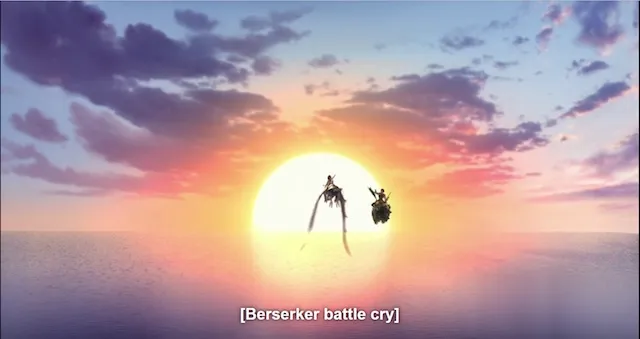
I couldn’t tell you whether or not the writers were working consciously with these parallels—probably not, honestly—but I’d be lying if I said the end of the episode didn’t leave my glasses a little misty. This is the kind of narrative grace they’re capable of, and it’s clear that a lot of care went into Heather’s story arc and her relationship with her people. I just wish we could’ve seen that same care put into considering how their “beautiful native women” would come off to actual native viewers.
All told, the Dragons franchise is still leaps and bounds ahead when it comes to making space for female characters, and the themes and values underpinning even its most minor character arcs tend to be pretty next-level stuff. I just hope that, in future, the writers don’t throw Indigenous people under the yak-cart, so to speak, for the sake of a short-lived Gilligan’s Island gag.
(images: Netflix)
Elaine Tamblyn-Watts is an Ottawa-based Anglo-Anishinaabe writer and editor. She was supposed to become a foreign correspondent, but she developed fibromyalgia and had to drop out of journalism school, so now she watches a lot of cartoons and gets a lot more work done. Elaine served as copy editor for The Charlatan for the 2016-17 year, put out a poetry chapbook called Fingernail Moon and is currently working on about nineteen other projects.
Want more stories like this? Become a subscriber and support the site!
—The Mary Sue has a strict comment policy that forbids, but is not limited to, personal insults toward anyone, hate speech, and trolling.—
Have a tip we should know? [email protected]